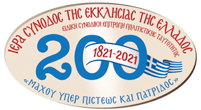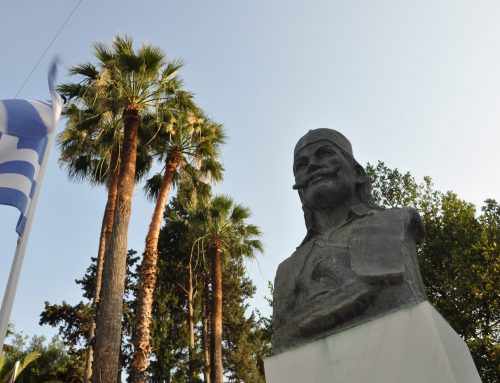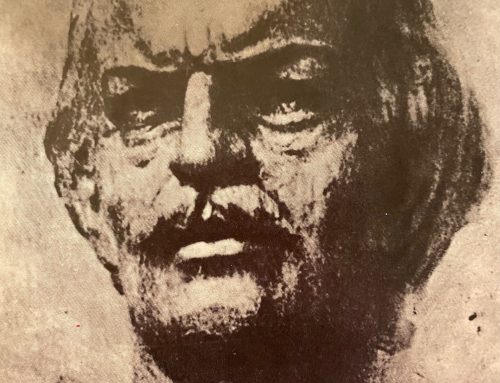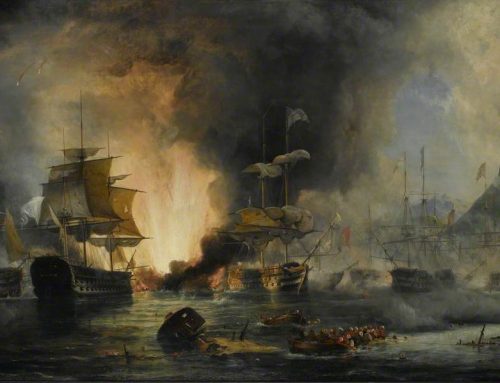On June 21 and 22, 1824 the Ottoman fleet led by the Grand Admiral (“Kapudan Pasha”) Koca Hüsrev Mehmed Pasha destroyed the island of Psara. The Turkish army disembarked and killed thousands of Psarians, Asia Minor refugees and fighters from Thessaly and Macedonia.
We honour Psara for the brave seamen and fire ship men who acted during the Greek Revolution. We remember Constantinos Kanaris, Apostolis, Nicodemos, a.o. Their valour impresses us ever since our young age.
Their Orthodox faith and piety teach us. Their revolutionary banner bore the sign of the Cross. Before setting the Turkish armada on fire off the island of Hios, Kanaris prayed to the Blessed Virgin Mary for victory.
We admire their patriotism and self-sacrifice. When the Turkish fleet appeared, the Psarians did not cower nor run. They stayed there, on their rocky island, and fought to the last man. Antonios Vratsanos blew himself up in Paliokastro together with many Psarians and Turks, thus reminding us of comparable acts of self-sacrifice by the Souliots, the Naousseans a.o.
We are impressed by the unity of Hellenism. 1,000 Thessalians and Macedonians fought side by side with the Psarians, having fled to the island following the unsuccessful rebellion of Northern Greece. Following the slaughter and destruction, Dionysios Solomos, the national poet of Greece, described the march of Glory on “blackened ridge of Psara” in his own unrivalled manner. Let it be noted that one of the sites of Psara is truly called “Black Ridge”. It is there that Most Rev. Metropolitan Markos of Hios, Psara and Oinoussai proceeds every year to perform a Trisaghion for the rest of the souls of those who sacrificed themselves for faith and fatherland.
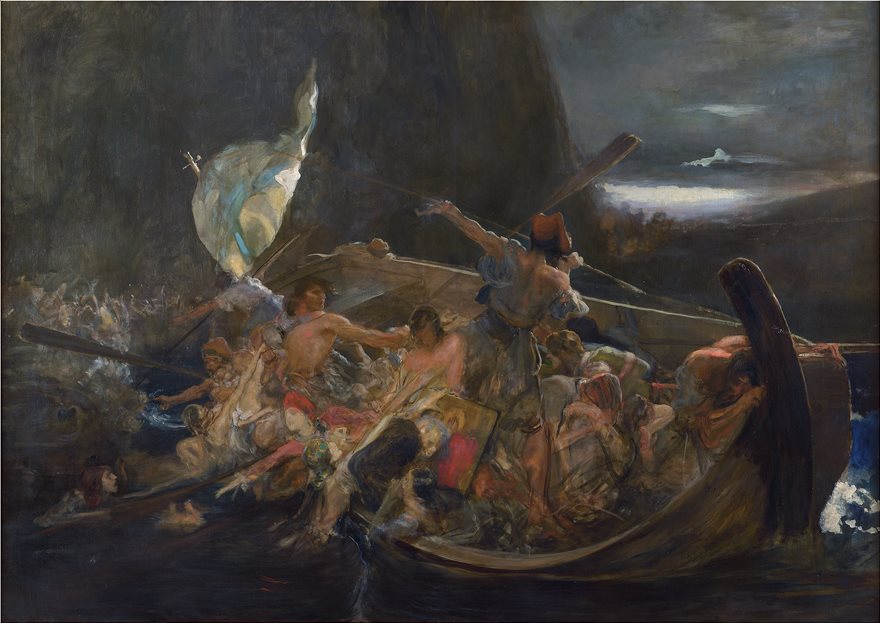
Nikolaos Ghyzis, Following the destruction of Psara, National Gallery, Athens
